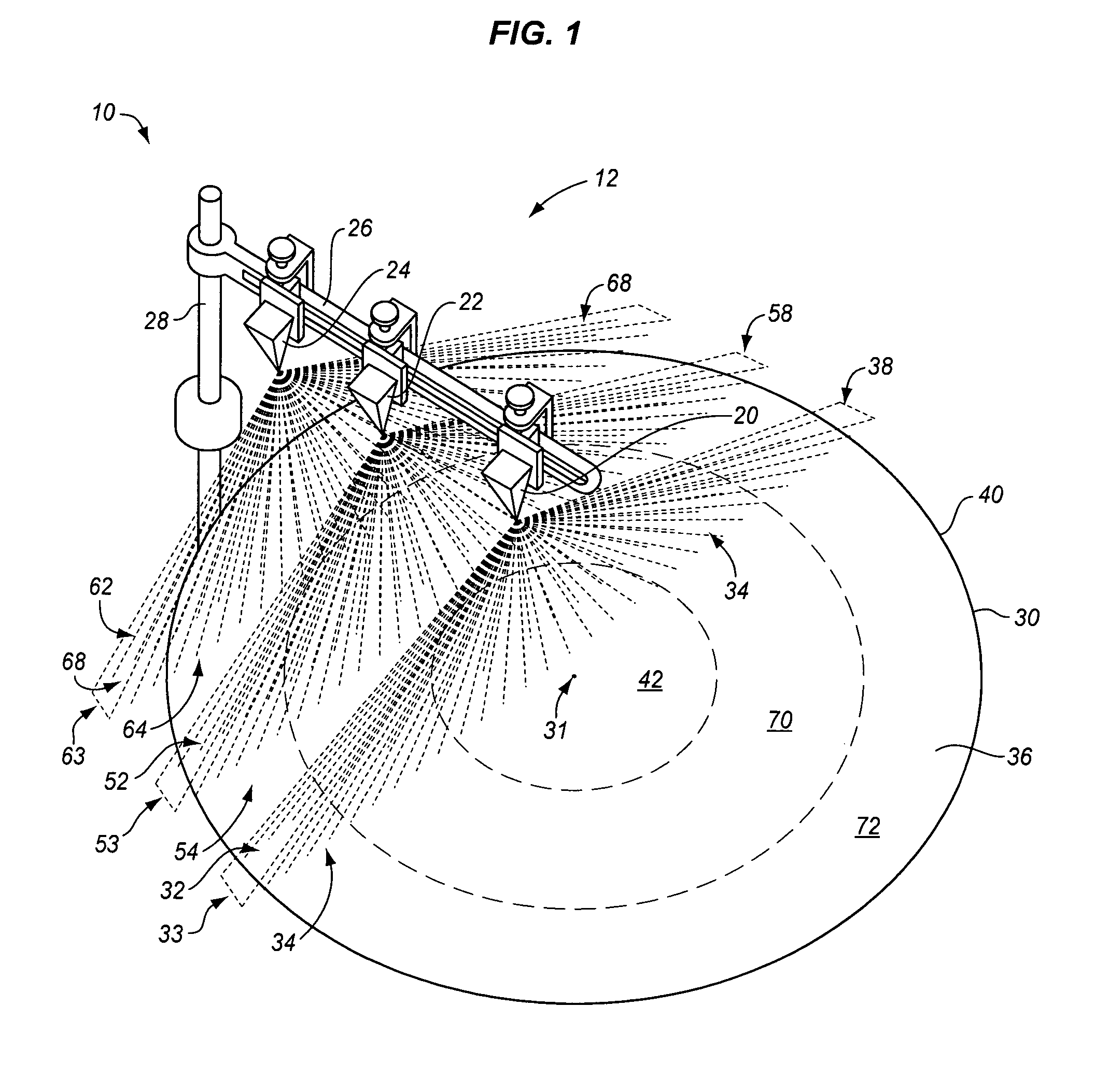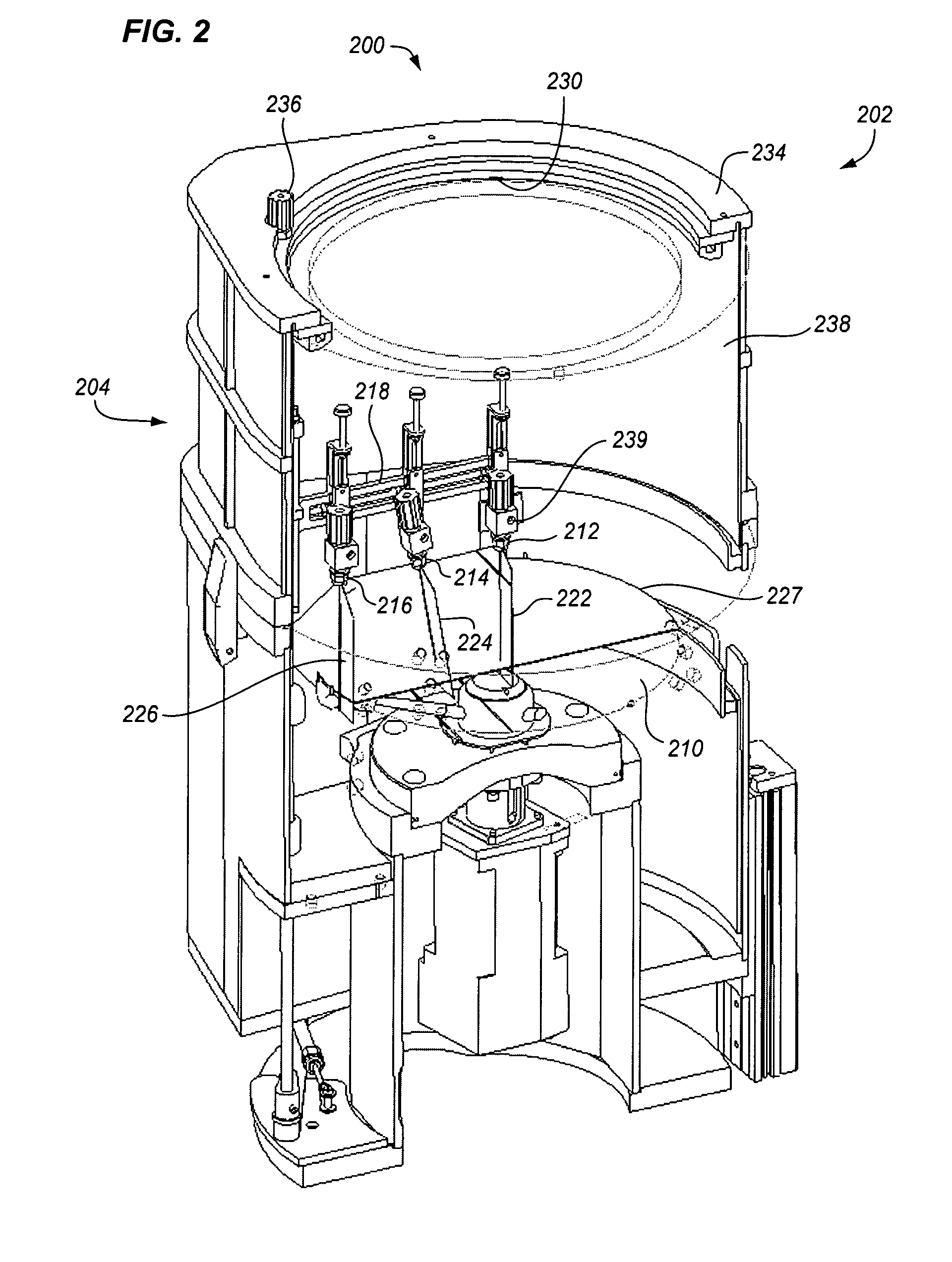Modulated metal removal using localized wet etching
a wet etching and module technology, applied in the direction of electrical equipment, decorative surface effects, decorative arts, etc., can solve the problems of large number of low aspect ratios, uneconomical depositing of thick metal layers, and more rugged and complex topography by adding additional layers
- Summary
- Abstract
- Description
- Claims
- Application Information
AI Technical Summary
Benefits of technology
Problems solved by technology
Method used
Image
Examples
example 1
[0091]Copper was removed from 300 mm semiconductor wafers using localized wet etching in accordance with the invention. Using conventional techniques, a seed layer was formed on each wafer, then a layer of copper was electroplated onto the seed layer. The wafer was etched without delay and with high-temperature thermal annealing. The etching solution after all components were combined and mixed consisted essentially of: H2O2 at 1.06 molar concentration and glycine at 0.066 molar concentration in deionized water having a pH value of 8.9. The etching rate typically associated with the etching solution is about 1000 Å per minute. Etching liquid was applied to the semiconductor wafers using an apparatus in accordance with the invention having a center nozzle and an edge nozzle. During etching operations, flow of etching solution liquid through a particular nozzle was either on or off. When flow through the center nozzle was switched on, the etching liquid flow rate through that nozzle w...
PUM
| Property | Measurement | Unit |
|---|---|---|
| radial distance | aaaaa | aaaaa |
| radial width | aaaaa | aaaaa |
| feature widths | aaaaa | aaaaa |
Abstract
Description
Claims
Application Information
 Login to View More
Login to View More - R&D
- Intellectual Property
- Life Sciences
- Materials
- Tech Scout
- Unparalleled Data Quality
- Higher Quality Content
- 60% Fewer Hallucinations
Browse by: Latest US Patents, China's latest patents, Technical Efficacy Thesaurus, Application Domain, Technology Topic, Popular Technical Reports.
© 2025 PatSnap. All rights reserved.Legal|Privacy policy|Modern Slavery Act Transparency Statement|Sitemap|About US| Contact US: help@patsnap.com



